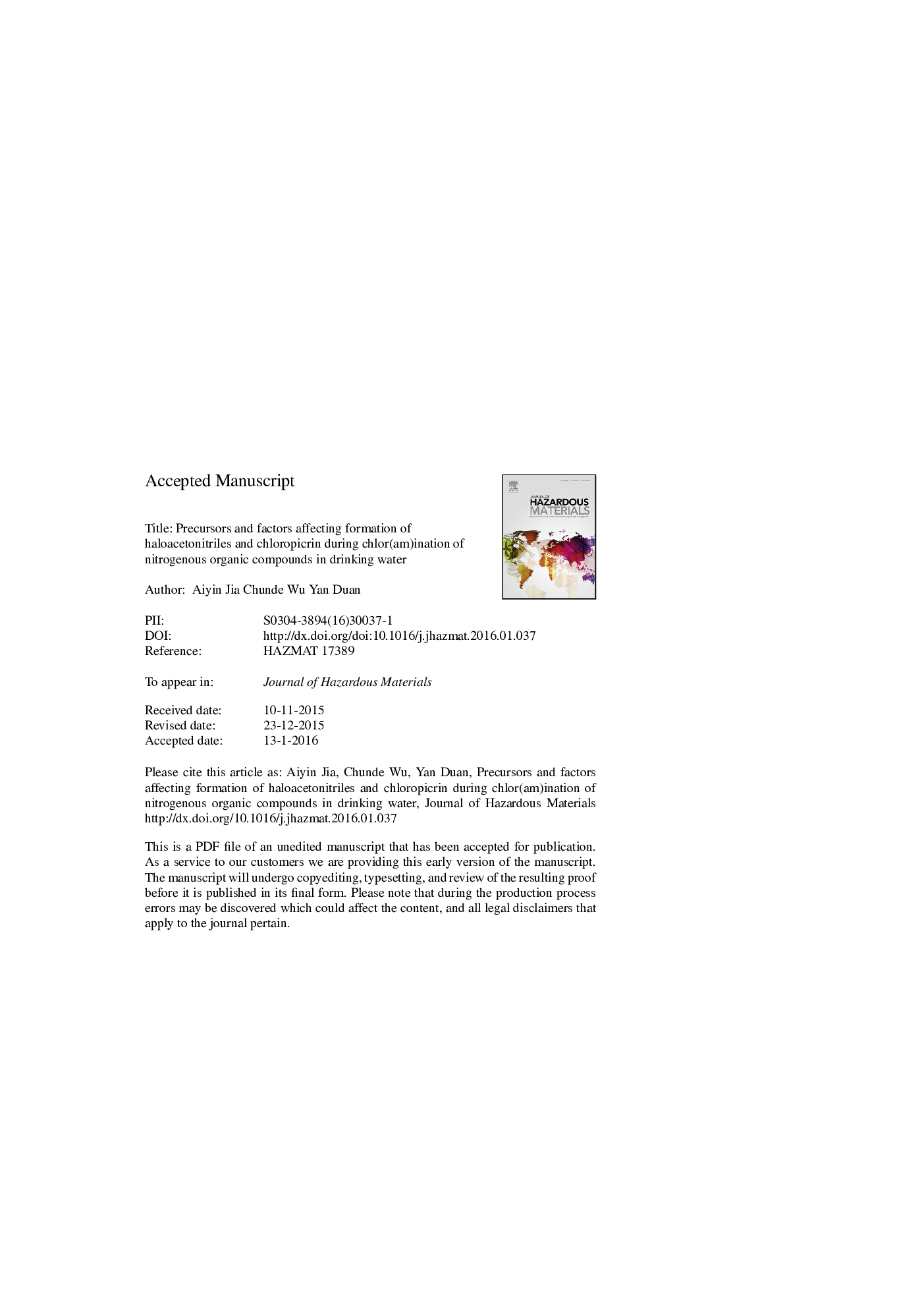| Article ID | Journal | Published Year | Pages | File Type |
|---|---|---|---|---|
| 575449 | Journal of Hazardous Materials | 2016 | 27 Pages |
Abstract
This study investigated the precursors and factors affecting formation of haloacetonitriles (HANs) and chloropicrin (TCNM) during chlorination/chloramination of eight amino acids in the effluent water of V-type clarifying filtration from a drinking water treatment plant. The yields of trichloroacetonitrile (TCAN), dichloroacetonitrile (DCAN) and TCNM were higher during chlorination than during chloramination. Tyrosine and tryptophan produced the greatest amount of DCAN and also generated a small amount of TCAN during chlorination process. Besides, the yields of DCAN were higher than TCNM during chlorination/chloramination. Contact time, Cl2:org-N molar ratios, pH, temperature and bromide ion affected nitrogenous disinfection by-products (N-DBPs) formation during chlorination of tryptophan in different degrees. TCAN, DCAN and TCNM formation showed the increasing and then decreasing with prolonged contact time. Higher Cl2:org-N molar ratios improved N-DBPs formation within a certain range. The pH affected N-DBPs formation differently. HANs increased with increasing pH from 5 to 6 and decreased with increasing pH from 6 to 9, while TCNM increased with increasing pH from 5 to 9. Higher temperatures enhanced TCNM formation, but reduced the formation of TCAN and DCAN. The presence of bromide ions improved the yields of HANs and TCNM and shifted N-DBPs to more brominated ones.
Related Topics
Physical Sciences and Engineering
Chemical Engineering
Chemical Health and Safety
Authors
Aiyin Jia, Chunde Wu, Yan Duan,
